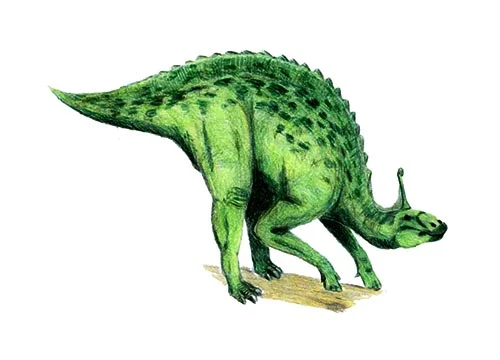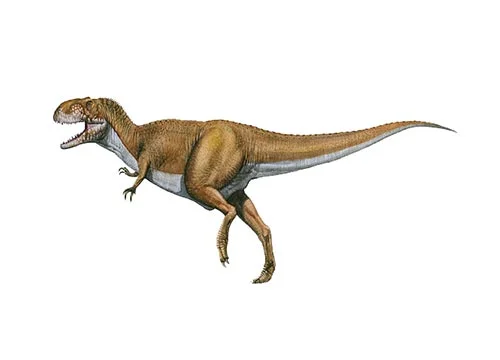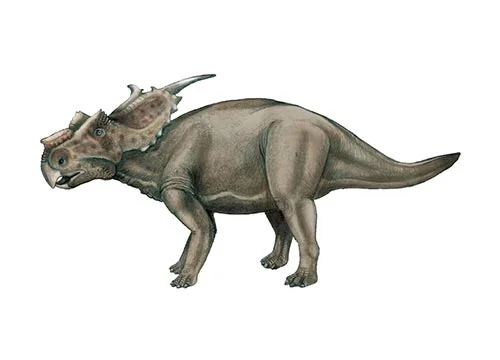Tsintaosaurus (Qingdao lizard)

Sin-dow-sore-us
C. C. Young - 1958
Herbivore
Estimated 9 meters long
Euornithopod
T. spinorhinus (type)
China, Shandong Province
Late Cretaceous, 70-65 million years ago
Tsintaosaurus Facts
Tsintaosaurus, meaning “Qingdao lizard,” is a genus of herbivorous dinosaur that lived during the Late Cretaceous period, about 70-65 million years ago. Its fossils were first discovered in the Shandong province of China in 1958 and named after the city of Qingdao, which was formerly known as Tsingtao.
Tsintaosaurus was a large dinosaur, measuring up to 30 feet (9 meters) in length and weighing up to 4 tons. It had a long, narrow head with a broad beak and rows of teeth that it used to grind up tough plant material. Its neck was long and slender, and its body was supported by four sturdy legs, each with four-toed feet.
One of the most distinctive features of Tsintaosaurus is its cranial crest, which was a bony structure on top of its head that likely served as a display or communication feature. This crest was highly variable in size and shape between individuals and may have been used in social interactions or to attract mates.
Tsintaosaurus was likely a social animal, living in herds and feeding on a variety of vegetation, including ferns, conifers, and cycads. It was a relatively slow-moving dinosaur and probably relied on its size and strength for protection against predators like Tarbosaurus.
Although Tsintaosaurus is relatively well-known compared to many other hadrosaurids, there is still much that is unknown about this dinosaur. Its fossils have provided valuable insights into the evolution and diversity of late Cretaceous dinosaurs, and ongoing research continues to shed light on its behavior, ecology, and biology.



